
|
Original numberplate styles for British cars.
Fitting period-correct numberplates to any preserved old car is a detail that wants to be done correctly. Modern plastic plates on a car from the 1960s, or pressed-aluminium, silver-on-black, plates on a car from the mid/late 1970s (despite now being legal on any 40+ year-old car classed as "Historic" in the UK), just looks wrong in my opinion. Just as bad are the many pressed-aluminium plates that can be found on old cars that are the wrong size, the lettering is incorrect, and just look very out of place. Therefore I thought it was high time that a page be published that describes the options that were open to motorists in years past, so that anyone restoring a car in Britain can seek out replacement plates that are correct for the period of vehicle being restored. Manufacturers "back in the day" include Bluemels, Wrights, Hills, and Ace.
|
|
Broadly speaking, cars of the 1920s tended to have either cast aluminium plates, or instead were hand-painted. Pressed-aluminium plates began to make an appearance in the 1930s, and continued post-WW2 into the 1940s and beyond, well into the 1960s in fact. Lettering was usually silver, but could also be in white. An old Austin I once owned, that was in very original "barn find" condition, had a pressed plate on the front, and a cast plate on the rear. That car dated to 1934. It was in the 1960s that reflective plates with a white background began to be an alternative to silver/black pressed plates on the front of cars, with yellow background plates on the rear, both either pressed or utilising separate letters attached with clips on the reverse.
|
|
I'm not a registration plate expert, so rather than try and say that one thing is correct, and another is not, I plan to dig out original contemporary literature relating to numberplates, and present it all on this page, for people to make up their own minds as to what would look best, and be correct, for their own machines. I'd also suggest anyone who has a car from the 1920s to the 1960s, have a look at the image archive section of the site, to study the types of plates evident in the hundreds of original old photos there.
|
|
One thing to bear in mind is that different styles were often available over a long period of time, and different styles at times were on sale concurrently, tailored for different types of vehicle, and also different budgets.
|
Featured original suppliers.
The following suppliers are on this page:
|
|
Return to the OCC Reference Library section.
|
|
Numberplates - 1940s/1950s.
Examples of numberplate designs correct for British cars & motorcycles 1940s - 1950s.
|
|
Bluemels.
- Published in a Frank Chick Ltd motor-trade supply catalogue.
- Date: 1950s.
|
|
The un-dated catalogue that the following Bluemels number plates were advertised in dates to the mid-1950s, I believe (there's a reference to the Renault Fregate, a model introduced in 1951).
|
| Bluemels Opalescent: |
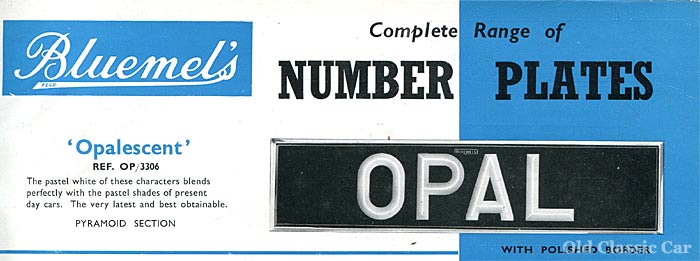
|
| Bluemels Silverite: |

|
| Bluemels Pyramoid: |

|
| Bluemels Satin Silver: |

|
| Bluemels Pressed Alloy: |

|
| Bluemels blank plates: |
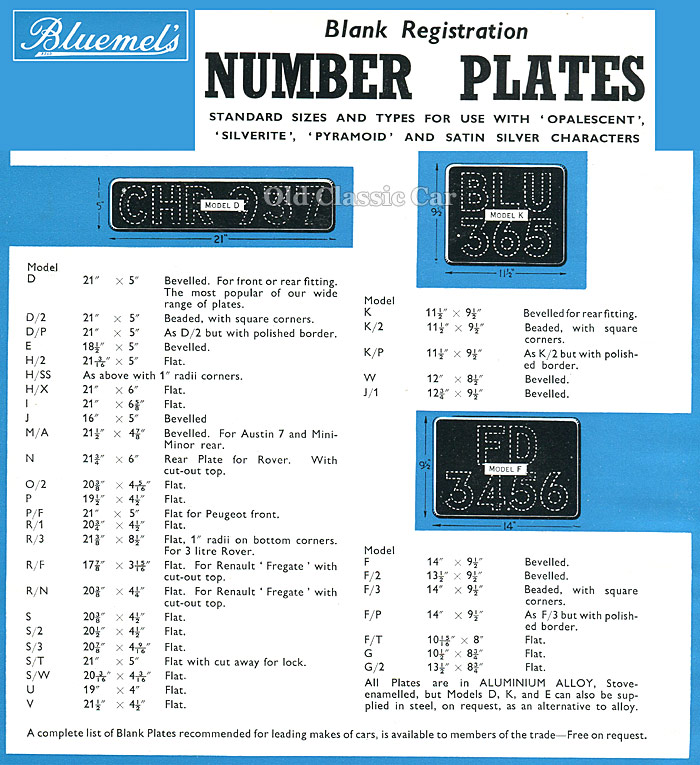
|
|
Chas. Wright Ltd.
- Original sales leaflet.
- Date: 1940s/1950s.
|
|
This original leaflet is un-dated, but is believed to be from the late 1940s or the beginning of the 1950s.
|
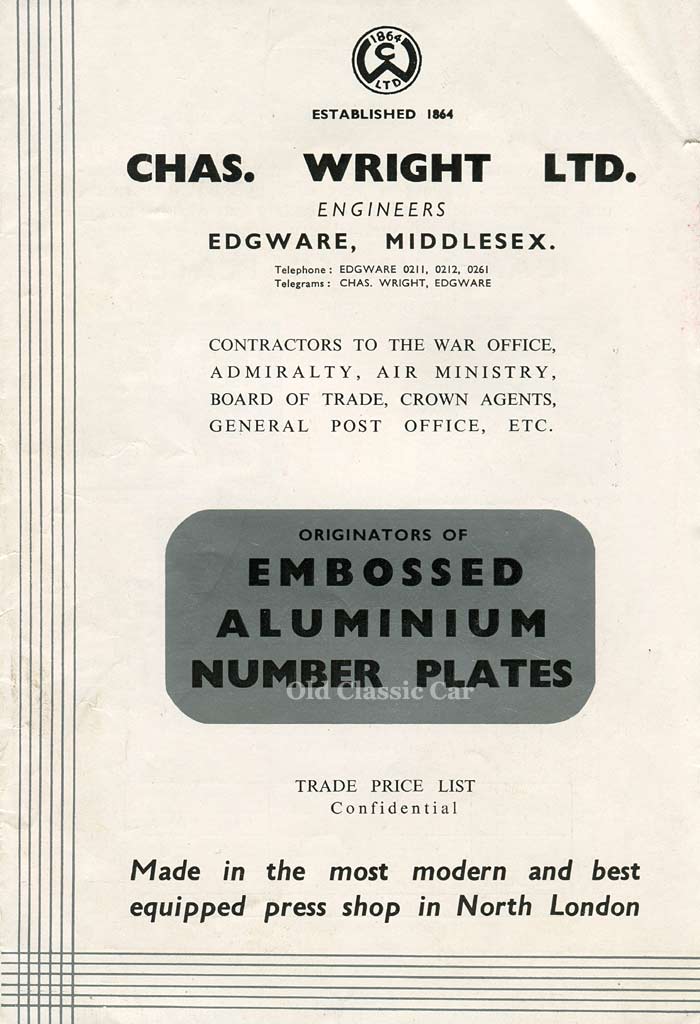
|
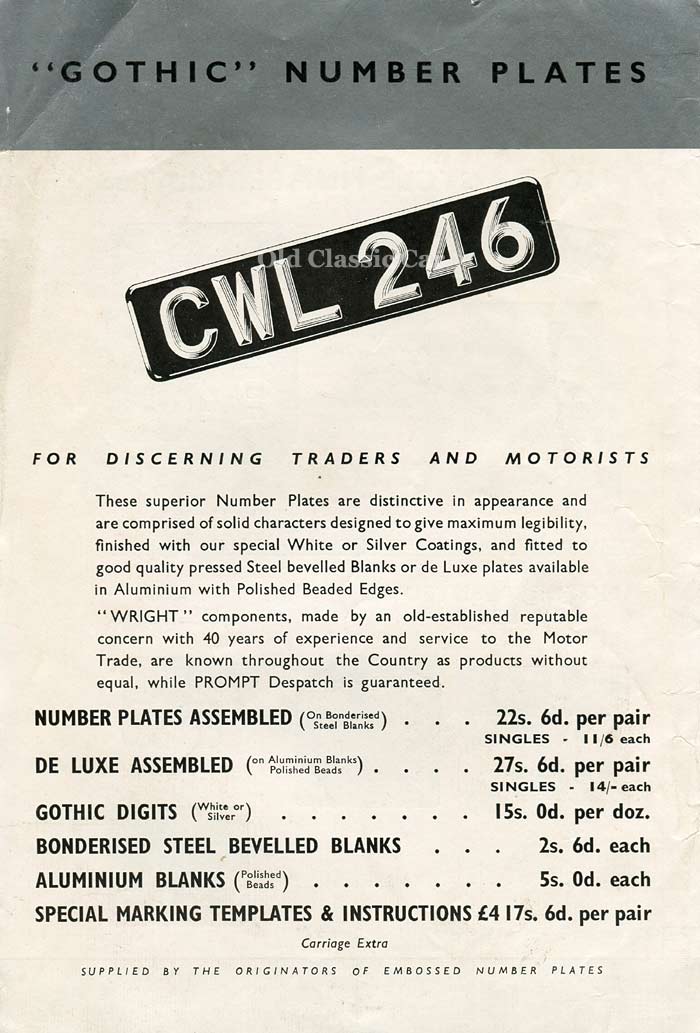
|
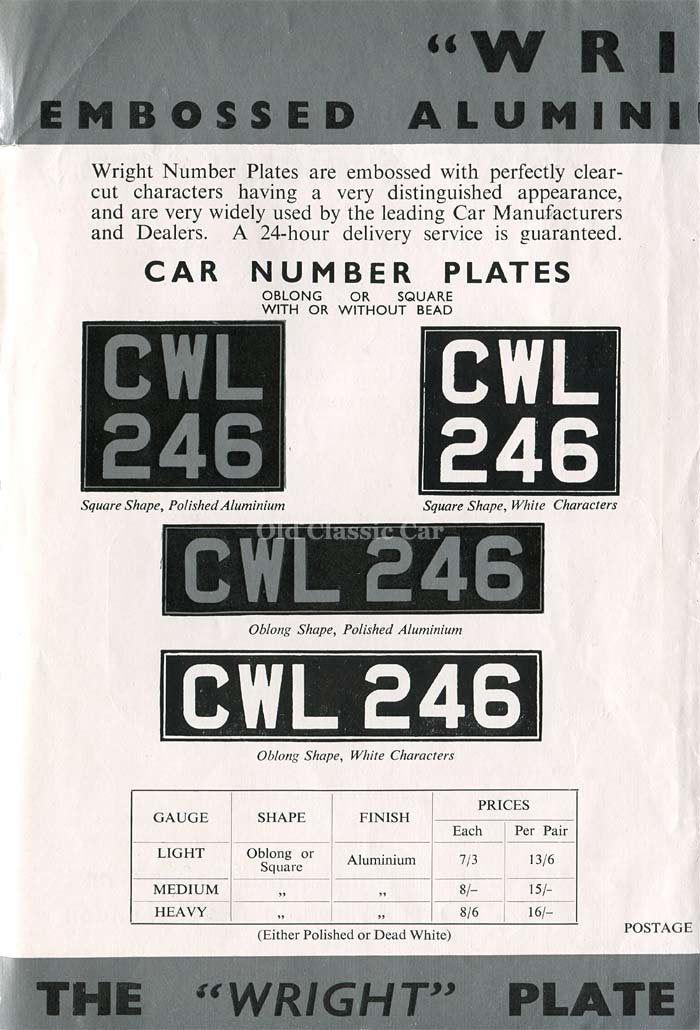
|
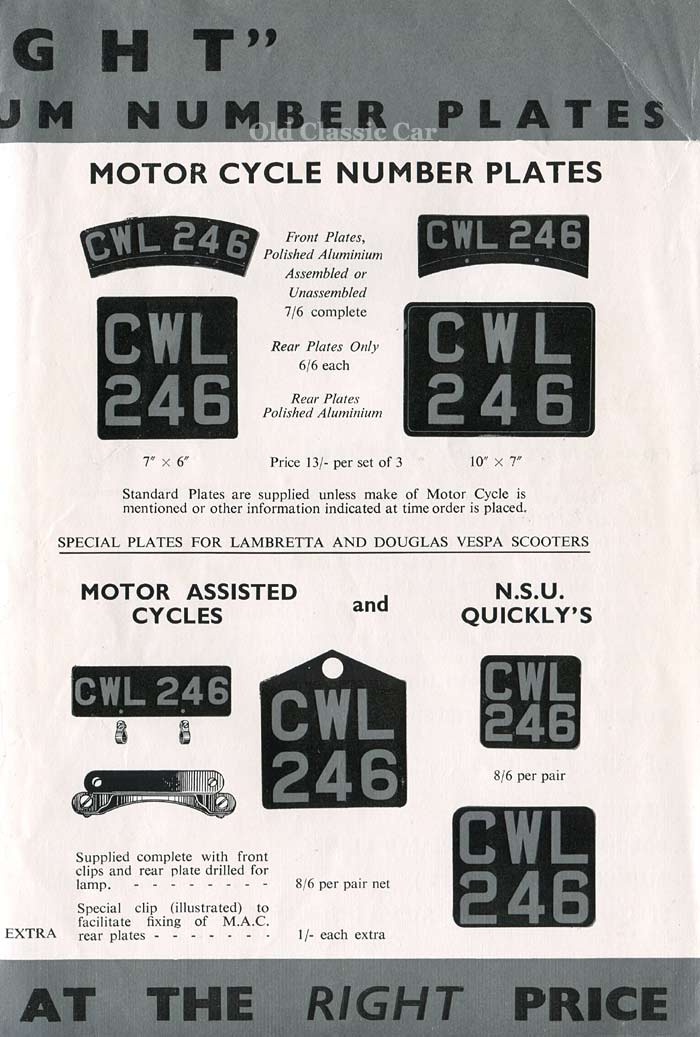
|
|
Hills.
- Published in a Frank Chick Ltd motor-trade supply catalogue.
- Date: 1950s.
|
|
From the same catalogue as the Bluemel's plates featured further up this page.
|
| Hills "Perfect Figure" numberplates: |
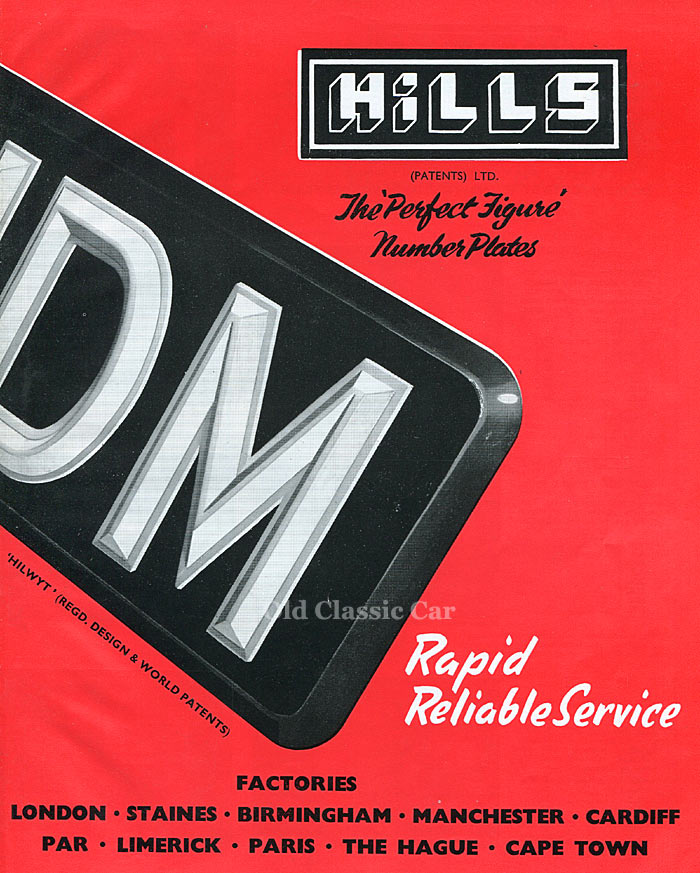
|
| Flexwyt (white digits, triangular section), Hilpeak (solid aluminium digits, triangular section) & Ivorite (white, half round digits) plates: |
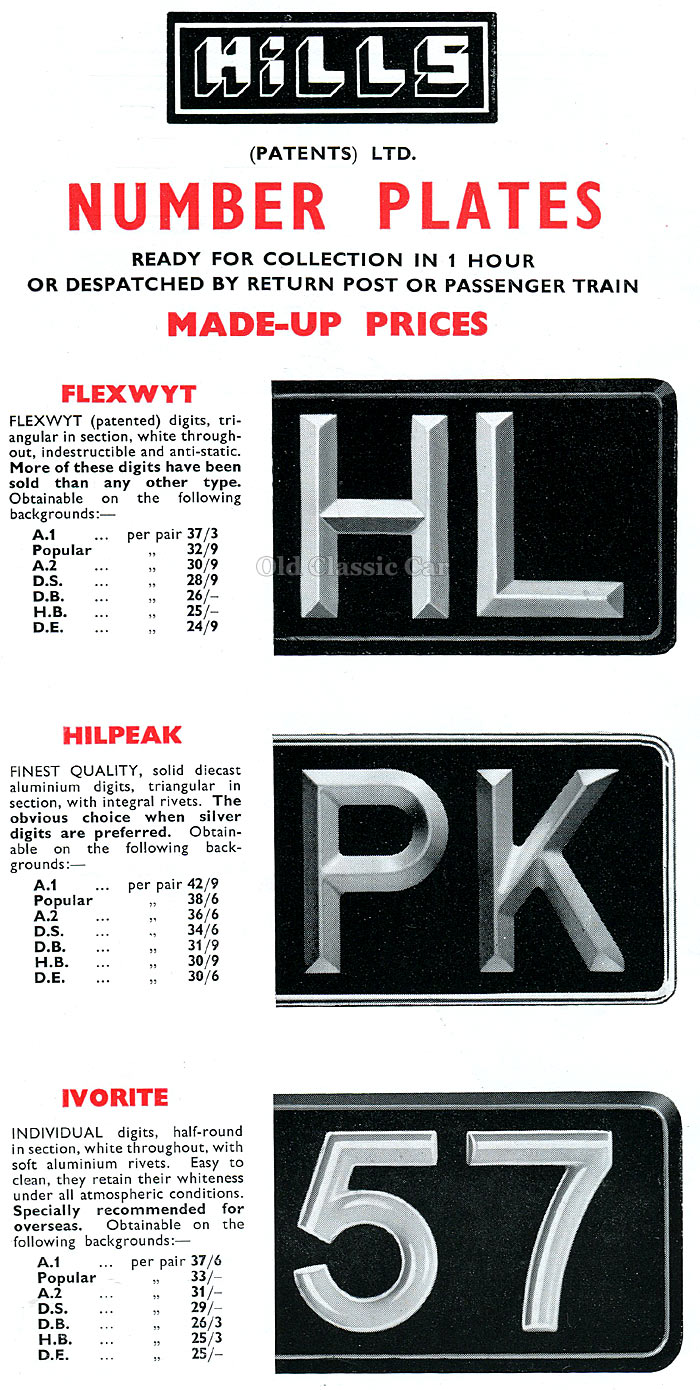
|
| Die-pressed aluminium, Hilwyt (white digits), Silverdome (chrome plated, half round) and Puraloy (aluminium individual digits): |
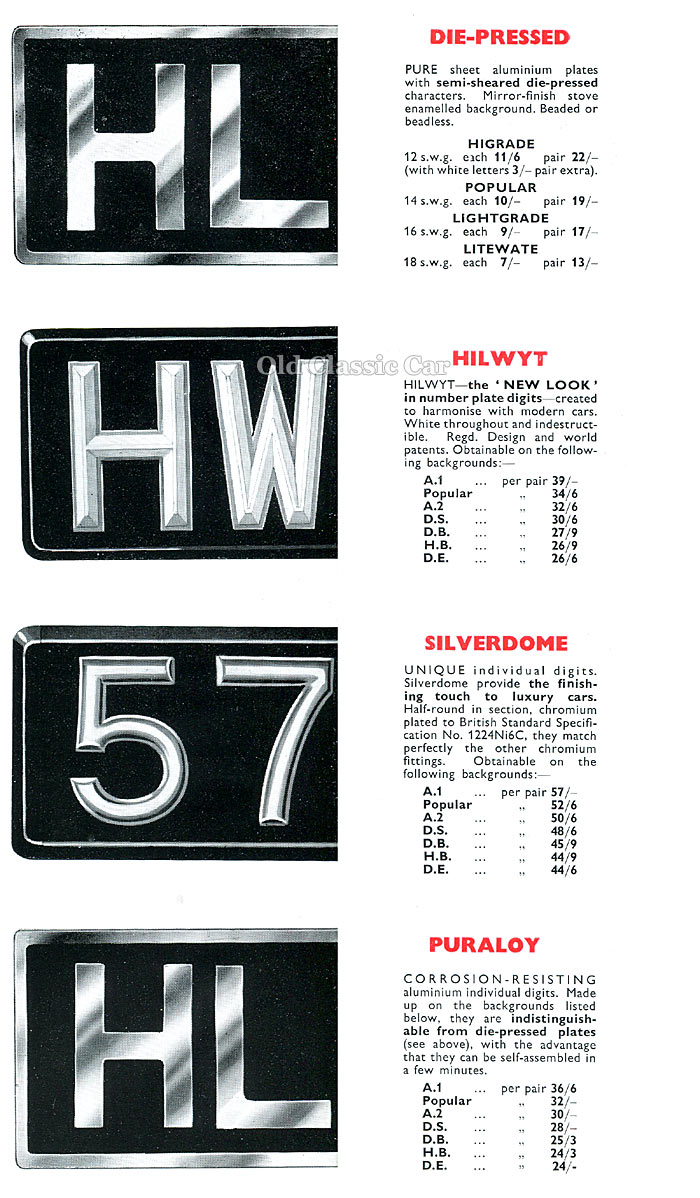
|
| Self-assembly plate kits, including assembly jigs: |
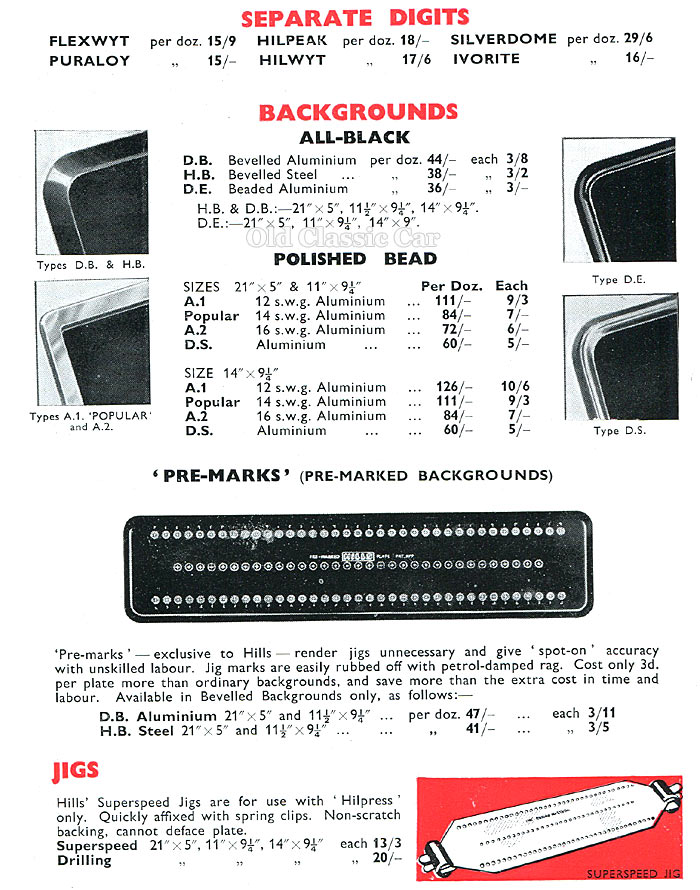
|
|
Please note.
Information presented in this section is provided as an aid to classic and vintage car owners only. It shouldn't necessarily be taken as gospel, more of a useful series of pointers. It may be that since these period instructions were created, better ways have since evolved to tackle work on the components being considered. Tips and advice may be given in these period articles, but inclusion doesn't necessarily suggest that anyone involved with OCC endorses the methods portrayed. A certain level of mechanical know-how will be required in undertaking work as described in these pages, and anyone unsure of their own abilities is advised to seek further assistance. Delve into your car's inner workings only if you feel confident in your own abilities, after all - a little knowledge can be dangerous, as the old saying goes.
|
|
No-one at OCC can be held responsible for breakages and injuries that might occur, while working on a vehicle following a read of pages hosted on the site. Dabble at your own risk. Where possible, the source(s) for the data shown will be given. If the accreditations are incorrect, or contravene your copyright, please let me know.
|
|
Return to the OCC Reference Library section.
|
|
To aid dating a vehicle's registration, please see the registration numbers look-up section, here at OCC.
|



















